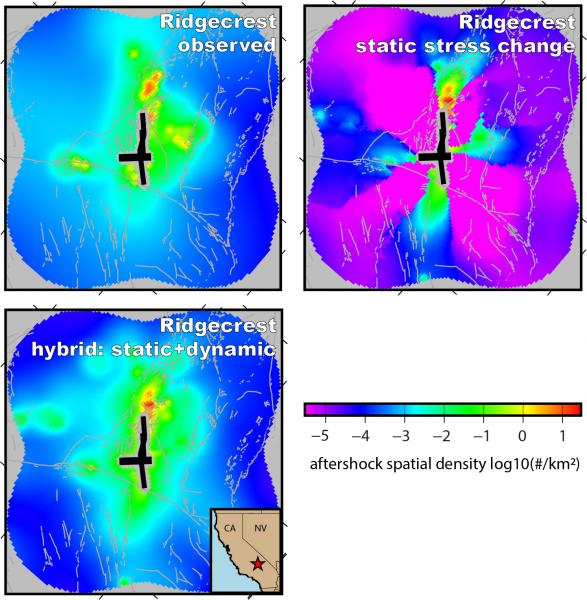Stress Shadows: Insights into the Physics of Aftershock Triggering
Jeanne Hardebeck
U.S. Geological Survey

- Date & Time
- Location
- In-Person & Online via Microsoft Teams
- Host
- Andrew Michael
- Summary
Aftershock triggering is commonly attributed to static Coulomb stress changes from the mainshock. A Coulomb stress increase encourages aftershocks in some areas, while in other areas termed “stress shadows” a decrease in Coulomb stress suppresses earthquake occurrence. While the predicted earthquake rate decrease is rarely seen, lower aftershock rates are observed in the stress shadows compared to stress increase regions. However, the question remains why some aftershocks occur in the stress shadows. I examine three hypotheses: (1) Aftershocks appear in shadows because of inaccuracy in the computed stress change. (2) Aftershocks in the shadows occur on faults with different orientations than the model receiver faults, and these unexpected fault orientations experience increased Coulomb stress. (3) Aftershocks in the shadows are triggered by other physical processes, specifically dynamic stress changes. For the 2016 Kumamoto, Japan, and 2019 Ridgecrest, California, sequences, the first two hypotheses seem unlikely. Over many realizations of the stress calculations with different modeling inputs, numerous aftershocks consistently show negative static Coulomb stress changes both on the model receiver faults and the individual event focal mechanisms. Hypothesis 3 appears more likely, as the spatial and temporal distribution of aftershocks in the stress shadows are consistent with the expectations of dynamic triggering: the aftershocks occur mainly in a burst over the first few days to weeks, and decay with distance like near-field body waves. The time series of dynamic stress can be modeled, and numerous metrics explored, such as the maximum dynamic Coulomb stress change, and the period and duration of the stressing. Determining which metrics correspond to aftershock occurrence in the stress shadows may be useful in discriminating between various proposed physical mechanisms of dynamic stress triggering.
Closed captions are typically available a few days after the seminar. To turn them on, press the ‘CC’ button on the video player. For older seminars that don’t have closed captions, please email us, and we will do our best to accommodate your request.
 Jump to Navigation
Jump to Navigation